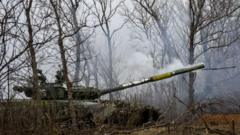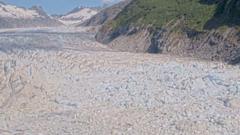In a shocking revelation, recent research has found that the warm waters of a marine heat wave, dubbed "the Blob," have devastated Alaska’s seabird population. The grim evidence began to surface between 2015 and 2016, with officials recording around 62,000 lifeless common murres—black-and-white seabirds typically found far from shore. This trend pointed to broader issues within the North Pacific ecosystem.
Experts from the Alaska Maritime National Wildlife Refuge now report that approximately four million common murres were lost, marking the largest die-off of a bird species in recorded history. These seabirds, which make up a large portion of the global murre population, were heavily impacted due to the heat wave's chain reaction affecting marine life, including their food sources.
Scientists argue that the alarming death toll highlights the urgent need to address climate change's effects on delicate ecosystems. As murres struggled to find their primary prey, the fragile balance of the ocean's food web has been thrown into jeopardy, signaling challenges ahead in preserving wildlife amid a warming world.






















